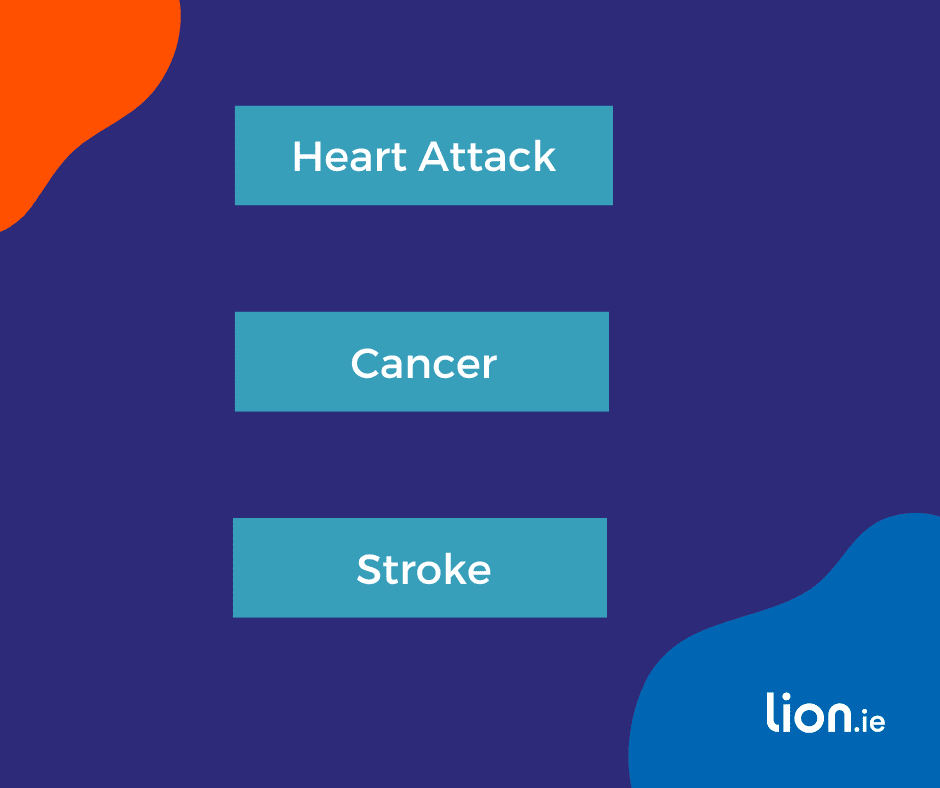How to Compare Serious Illness Cover In Ireland in 2024 (in 6 steps)

You’re simply the best. Better than all the rest. Better than anyone…
No doubt, Tina Turner didn’t sing those words with the intention of a life insurance broker from Offaly using them in an article about who is simply the best provider for Serious Illness Cover.
Yet here we are.

When it comes to comparing life insurance policies, there is usually a reasonably open playing field between providers.
For Serious Illness Cover, we’re going to pooh-pooh Aviva (sorry Aviva, but your definitions are more difficult to satisfy than your competitors, making it harder to make a successful claim)
Now, let’s look at how Serious Illness Cover actually works.
How Does Serious Illness Cover Work?
Serious Illness Cover is a type of insurance that pays out a tax-free lump sum of cash if you get sick with an illness as defined on your policy.
WAIT, THIS IS UBER IMPORTANTE.
The insurers define each illness explicitly in their policy conditions.
This means your policy won’t pay out for every disease you or I consider serious.
Also, it means that you could get an illness named on your policy, but you won’t get a payout if it doesn’t meet the definition.
This sounds a bit hairy, and that is why we recommend Income Protection over Serious Illness Cover.
Income protection doesn’t have a list or definition to satisfy.
It pays out for any medically recognised illness that stops you from doing your job (including mental health and musculoskeletal conditions)
Read: Serious Illness Cover V’s Income Protection
Which Insurer Is Best For Serious Illness Cover?
Look, you might be tempted to go with whichever insurer covers the longest list of illnesses.


I get it; it seems like a logical decision.
More is usually better, right?
But some of those illnesses are ridiculous.
You’re more likely to be killed by a unicycling bear on a sunny day in Ireland than to contract some of the illnesses covered by the insurers.
So then smartypants McGowan how should I compare Serious Illness Cover?
Here goes:
How to Compare Serious Illness Cover
Step 1: Do You Have Any Pre-Existing Health Issues?
If so, check if those issues affect your application for specified illness coverage.
Some conditions, for example, MS, Diabetes, Heart Issues and HIV, will stop you from getting specified illness coverage, unfortunately.
If you have an illness or a family history of an illness that is covered by specified illness cover, you are likely looking at an exclusion for that condition e.g. Cardiomyopathy
Let me know if you think your health will affect your chances of coverage by completing this questionnaire.
Step 2: Choose Quality over Quantity
As I mentioned above, there’s no point falling for a long list of illnesses unless the list contains an illness that
a) you might actually have a chance of contracting and
b) is easy to claim for.
You see, the insurers keep adding new conditions and illnesses all the time to buff out their list.
But most of them are illnesses you’ve never even heard of.
They are window-dressing.
Otherwise, shouldn’t the price of specified illness coverage increase every time the insurer adds a new condition?
It seems logical, right? If you add more illnesses, the risk of a claim is higher, so the insurer should increase their premiums to mitigate that risk.
But yet- they add additional illnesses without increasing their premiums.
What sorcery is this?
The insurers have done the sums and are pretty sure that adding all these new-fangled illnesses won’t result in additional claims.
One such new-fangled illness is necrotising fasciitis – or flesh-eating disease.
How many people do you know who have had a touch of the old necrotising fasciitis?
Exactly.
In short, don’t fall into the trap of the longest list of illnesses, especially if you haven’t heard of most of them.
Step 3: Find the Conditions You are Most Likely to Claim For
Eleven illnesses make up almost 90 per cent of all claims.
Three of those illnesses make up a whopper 83 per cent of claims.
Those three illnesses are cancer, heart attack, and stroke.


All the insurers cover the big three, but science adds an additional layer you need to be aware of.
Step 4: Focus on the Definitions of the Illnesses
As you know by now, each illness is defined by the insurer in their policy T&Cs.
These definitions can make it easier or harder to claim for an illness, such as a heart attack.
A heart attack, also known as a myocardial infarction (M.I.), happens when part of the heart muscle dies because it has been starved of oxygen. This causes severe pain and an increase in cardiac enzymes and troponins, which are released into the bloodstream from the damaged heart muscle.
NB! The increase in troponins is essential here.
In the past, troponins had to reach a certain level for a claim to be successful.
Nowadays, any increase in the level of troponins is enough for Zurich Life, Royal London, New Ireland and Irish Life to pay-out.
Aviva still requires troponins to reach a certain level, which indicates a severe heart attack.
Just call me Dr Nick. (Hiiiii everybody.)

Similarly, for strokes:
Previously, to claim for a stroke, the medical evidence had to show permanent damage.
Now, you can claim if symptoms have lasted for more than 24 hours with all insurers except Aviva, which still requires permanent symptoms.
And, with Multiple Sclerosis, you had to have lasting symptoms for a certain amount of time.
In contrast, you can claim with all of the insurers (bar Aviva again) based on a definite diagnosis of M.S.
Illness
Previous Definition
Current Definition
Stroke
Requires permanent neurological deficit with persisting clinical symptoms
Have removed the requirement of permanent symptoms if there is definite evidence of stroke on a brain scan and neurological deficit with persistent clinical symptoms lasting at least 24 hours
Multiple Sclerosis
Related symptoms must have persisted for a continuous period of at least 6 months
Have removed the requirements of related symptoms for 6 months
To decide which policy is best for you, you’ll want to look through the list of illnesses from each insurer and the corresponding definition to see which is fairest and most straightforward to claim on.
Step 5 – Choose Wisely
Choosing between Zurich, New Ireland, Royal London, and Irish Life is difficult.
However, Zurich has a couple of tricks up its sleeve.


1. Booster Serious Illness Benefit:
An additional payment of up to 200 per cent if:
You are under 45 and diagnosed with Alzheimer’s, Motor Neuron Disease, Dementia, or Parkinson’s.
Or for blindness, coma, loss of hands/feet, loss of speech, paralysis, third-degree burns, traumatic head injury or damage of independent existence.
Essentially, it’s a booster payment to help should you suffer a life-changing illness.
e.g. if you have €50,000 serious illness cover and you’re in a car accident which results in traumatic head injury, Zurich Life will pay out €100,000
2. Child Specific Serious Illnesses
This is a payment for parents if their children are diagnosed with types of cystic fibrosis, cerebral palsy, or spina bifida.
The thought of ever having to claim on this is heartbreaking, but it will give the parents some financial breathing space to take time off work to care for their little one.
Step 6 – Get a Quote!
You can get an instant serious illness cover quote here.
We recommend accelerated illness cover over additional or standalone – find out why here.
How to Compare Serious Illness Cover
Once you’re ready to take the leap, you can call me at 05793 20836 or fill out this form, and I’ll take it from there!
Thanks for reading
Nick
Editor’s Note | We first published this blog in 2019 and have regularly updated it






